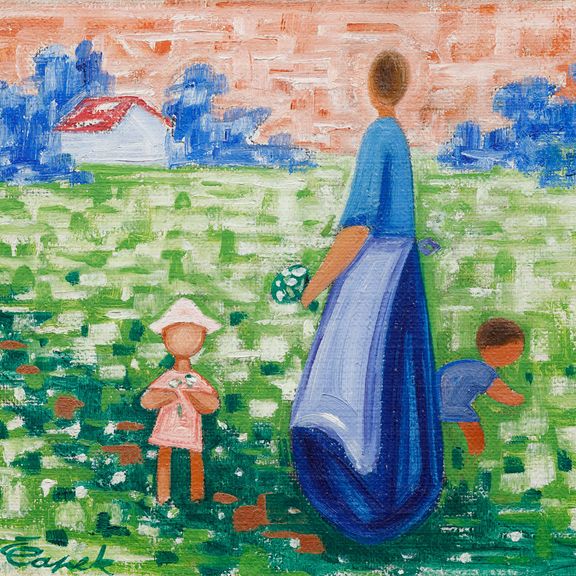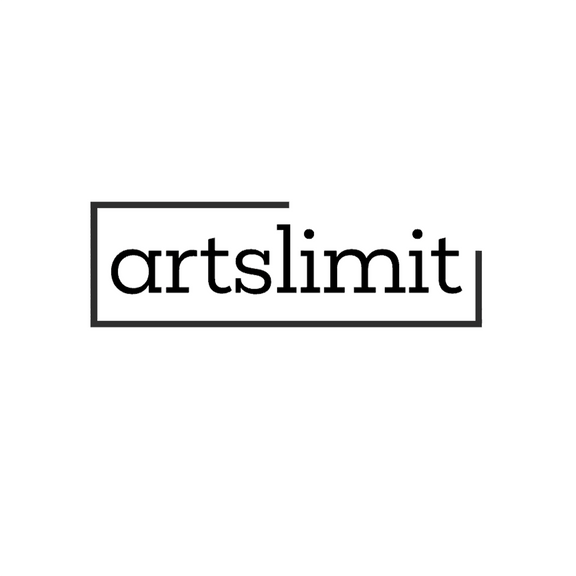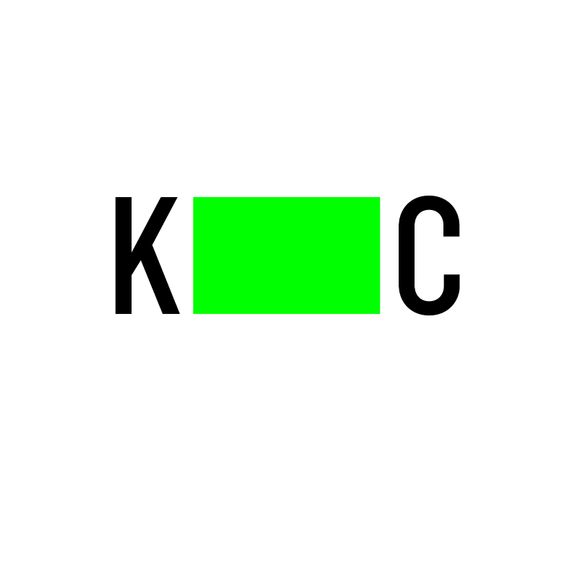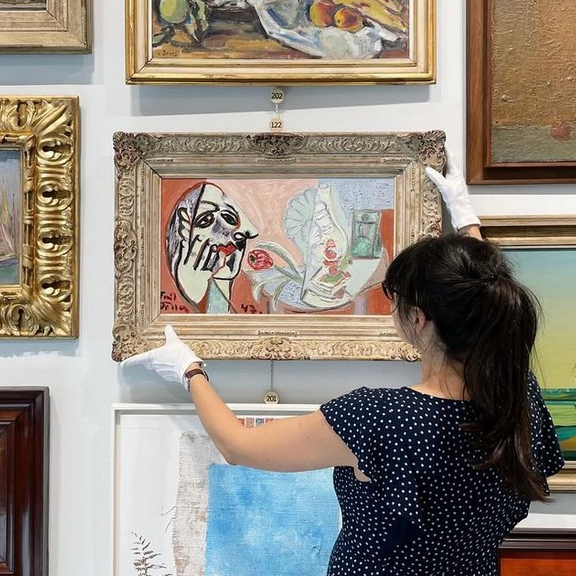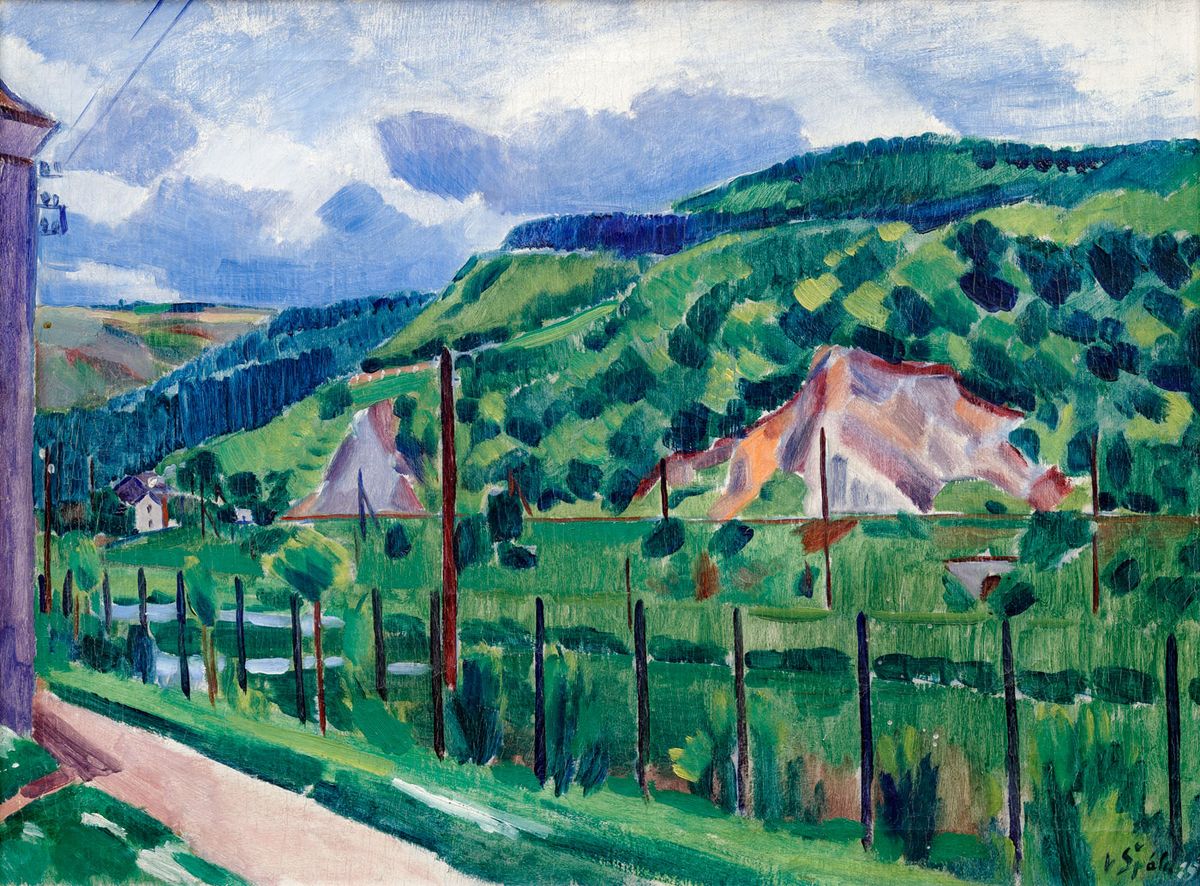
oil on canvas
1925
lower right
60 × 81 cm
framed
This unique work, full of joy and energy, comes from one of the most acclaimed painters of the founding generation of Czech modern art, Václav Špála. In his youth, he was influenced by trips to Italy and France, where he got familiar with the works of Picasso, van Gogh, Gauguin, Munch, and especially Cézanne. In his works, he uniquely interpreted Cubism and Fauvism by reducing forms based on the feeling and lightness of bright colours in opposition to the ideology of the Group of Visual Artists led by Emil Filla. His work celebrates sensual life and nature flooded with light, fragrance, colour and warmth. Špála understood the painting as an independent organism. Based on this approach, he simplified the shapes to an abstract framework and created the impression of space using a few colours and expressive lines. He fell in love with the landscape in which the river flowed through a deep valley under steep banks and in which he felt the drama of nature. He painted the Vltava River near Veltrusy and Štěchovice, the Sázava River near Chocerady, the Berounka River near Srbsko and later in Červená nad Vltavou, and the Otava River near Písek. In his inventory, he entitled the presented work “Berounka and hills (from the window), green”. He captured with quick brushstrokes in the shades of green a clear day on the banks of the Berounka River and the fleeting impression of the changing events of nature. This “green period” preceded his famous “blue period”. The power of the work reflected the life energy of the artist, who, although he always painted in plein air, in the end declared: “I do not paint landscapes, but myself.” On the reverse of the painting is the artist’s number 100, under which it is listed in the inventory of his work (E. Burget / R. Musil: Václav Špála: Inventory (1885–1946), Prague 2002, p. 47). The number is in double brackets, classifying this painting among the most successful works, which the author himself highly valued. Assessed during consultations by prof. J. Zemina and PhDr. J. Machalický. The expertise of PhDr. K. Srp is attached.
